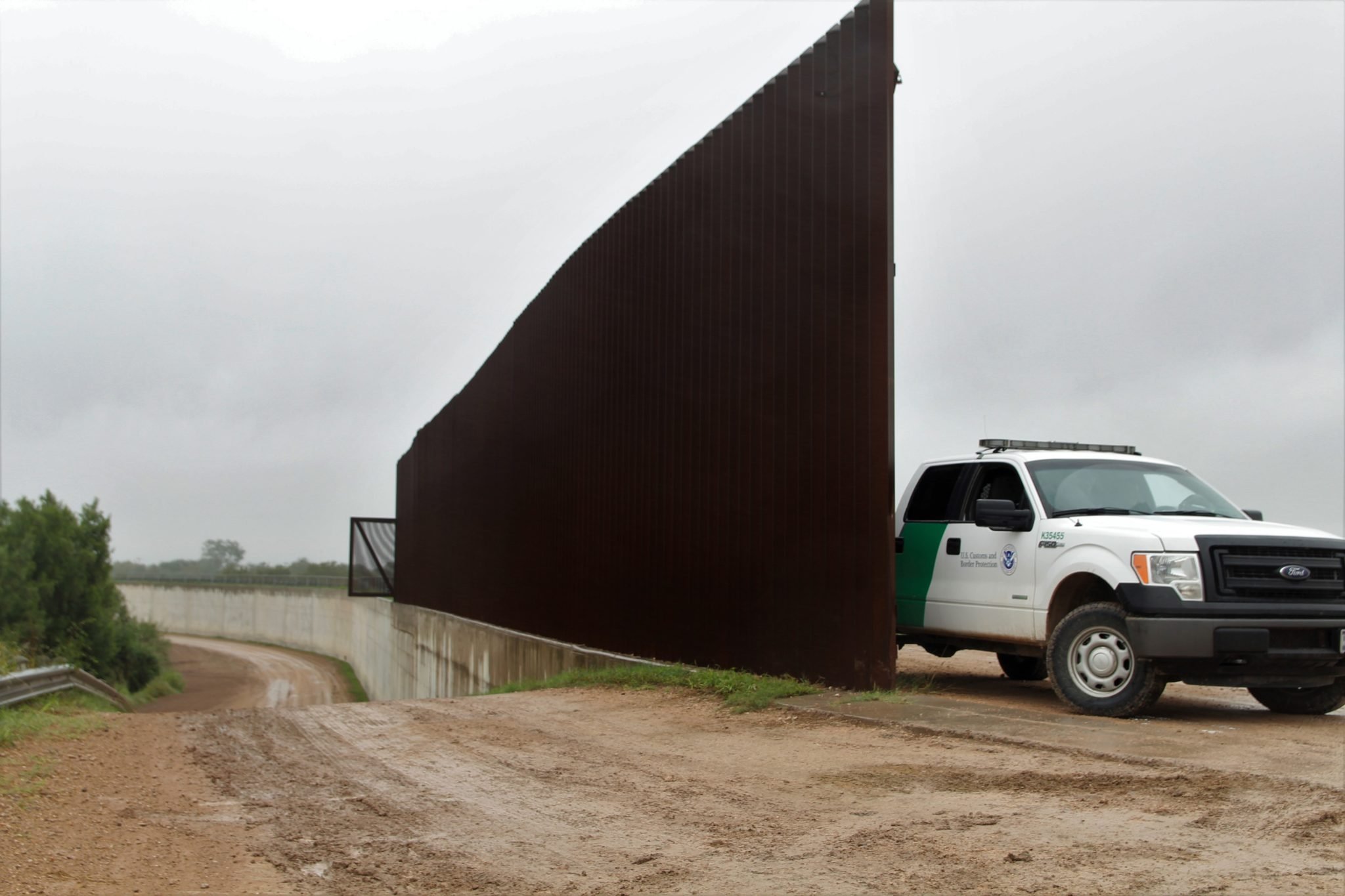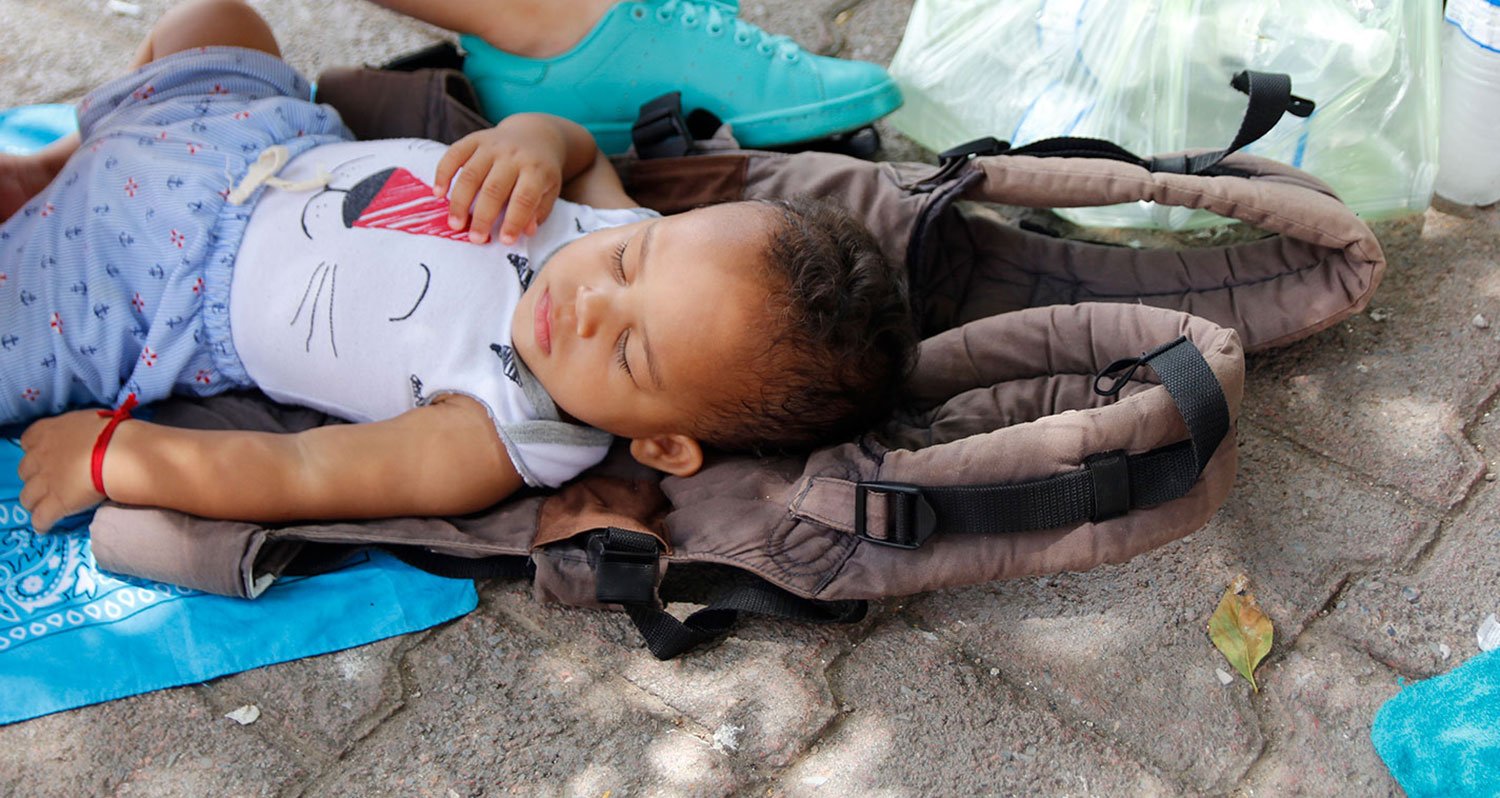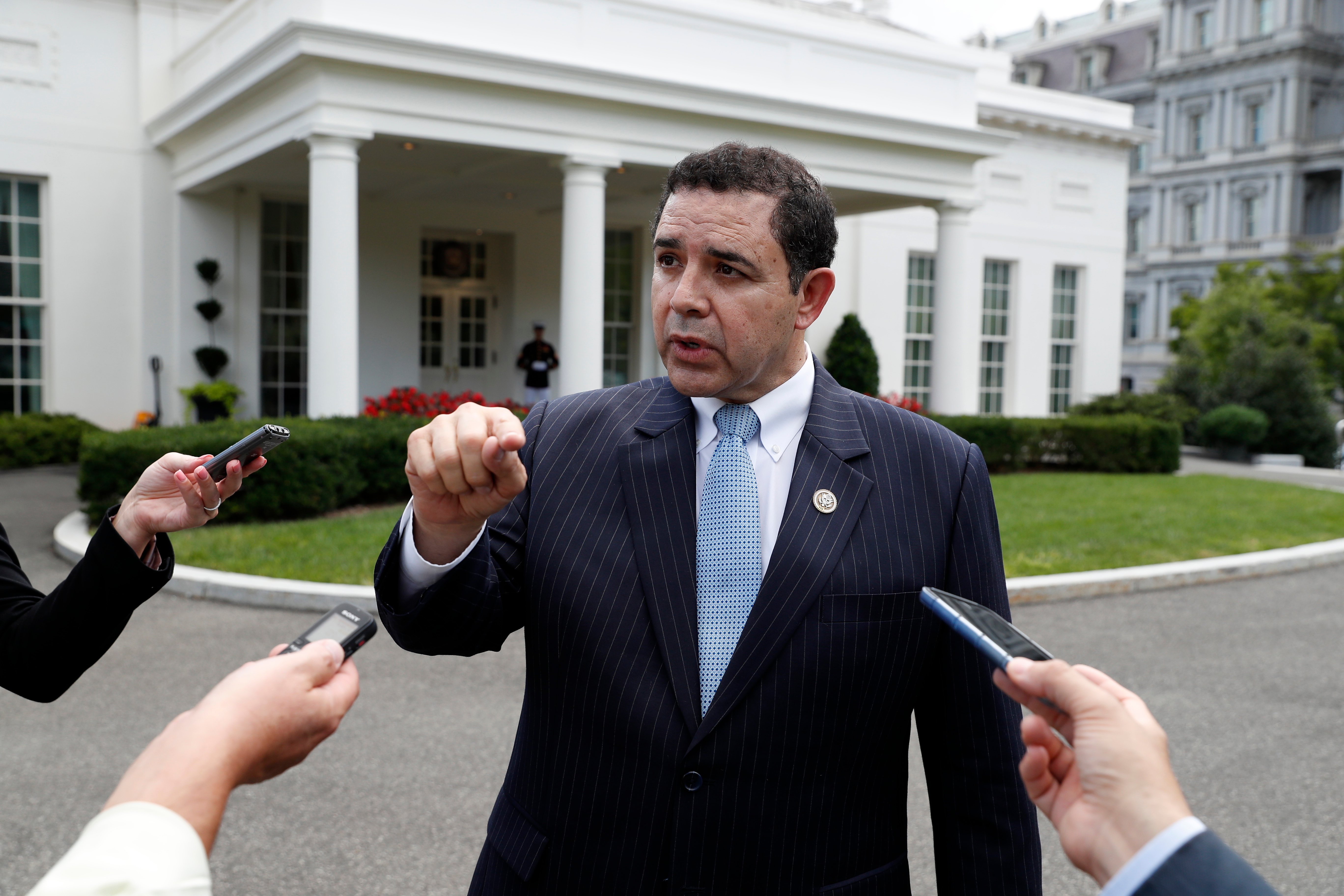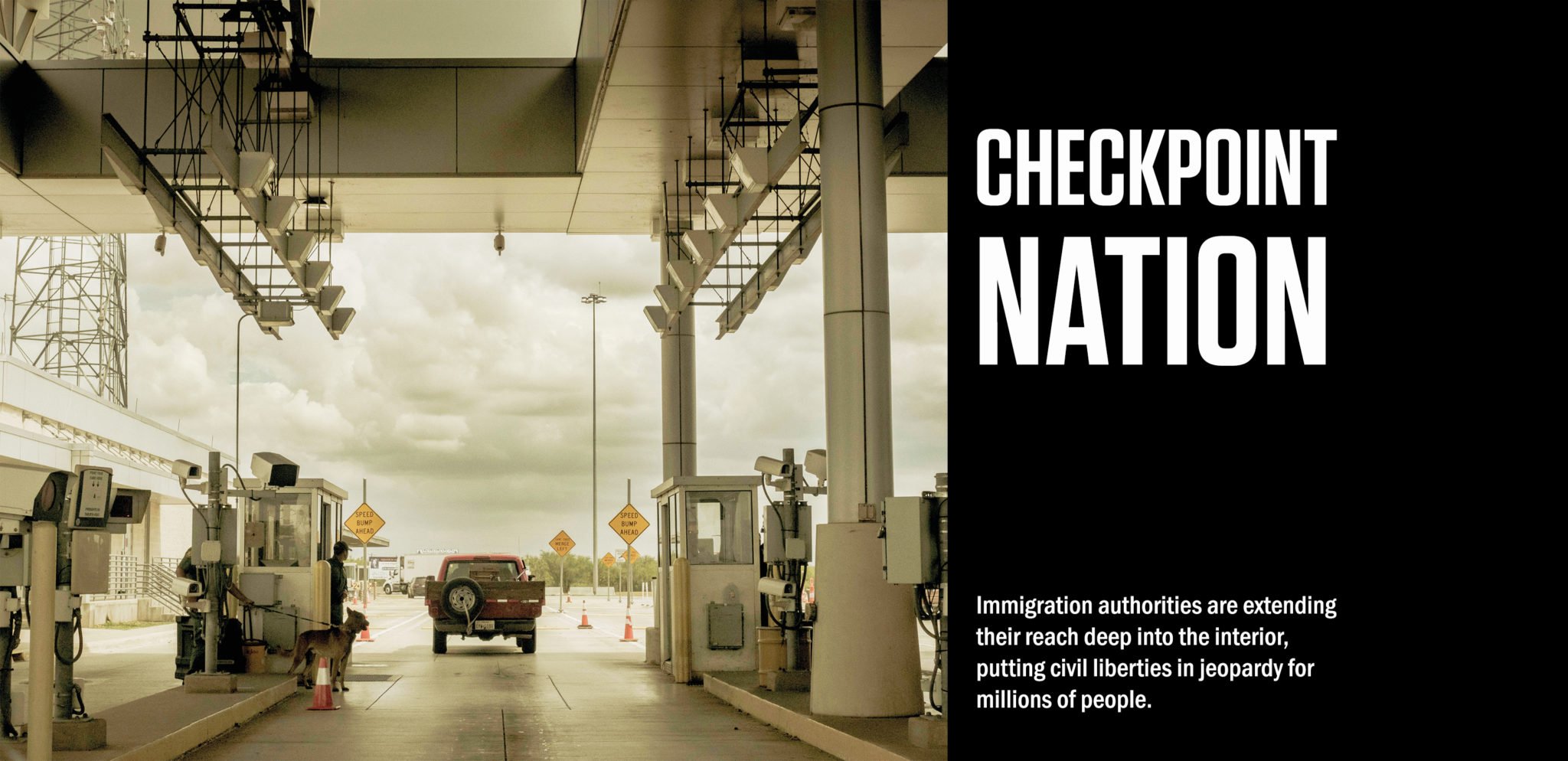
by Melissa del Bosque
October 8, 2018
Laura Sandoval threaded her way through idling taxis and men selling bottles of water toward the entrance of the Cordova International Bridge, which links Ciudad Juárez, Mexico, to El Paso, Texas. Earlier that day, a bright Saturday in December 2012, Sandoval had crossed over to Juárez to console a friend whose wife had recently died. She had brought him a few items he had requested — eye drops, the chimichangas from Allsup’s he liked — and now that her care package had been delivered, she was in a hurry to get back to the Texas side, where she’d left her car. She had a three-hour drive to reach home, in the mountains in New Mexico, and she hated driving in the dark.
Sandoval took her place in the long line of people waiting to have their passports checked by U.S. Customs and Border Protection (CBP). When it was her turn, she handed her American passport to a customs officer and smiled amicably, waiting for him to wave her through. But the officer said she had been randomly selected for additional screening. Sandoval was led to a secondary inspection area nearby, where two more officers patted her down. Another walked toward her with a drug-sniffing dog, which grew agitated as it came closer, barking and then circling her legs. Because the dog had “alerted,” the officer said, Sandoval would now have to undergo another inspection.
She was taken to a fluorescent-lit, windowless room inside the port of entry office. Two female officers entered and announced that they were going to search her for drugs. They patted her down again, but found nothing. At that point, Sandoval assumed they would release her, but instead they told her they were going to conduct a strip search. The officers put on latex gloves, picked up flashlights and asked Sandoval to remove her clothes and bend over so they could look for signs of drugs in her vagina and rectum.
By the time they finished, Sandoval had been detained for more than two hours in the stifling room. Her passport and cell phone had been confiscated; her husband and children had no idea where she was. Sandoval begged to be released. “I was shaking and I was in tears,” she told me. Saying nothing, the officers put her in handcuffs and led her to a patrol car waiting outside. They left the international bridge and drove north into Texas. Frightened, Sandoval asked the officers if they had a warrant for her arrest. “We don’t need a warrant,” one of them replied.
–
CBP is the agency tasked with guarding America’s borders, as opposed to Immigration and Customs Enforcement (ICE), which investigates, arrests and deports undocumented people throughout the country. Over the past 18 months, as resistance to President Trump’s immigration crackdown has grown, most of the criticism has been directed at ICE, whose interior enforcement mission often targets long-term residents without criminal records. Immigrant rights groups have begun a campaign to defund or abolish the agency. “ICE is terrorizing American communities right now,” Angel Padilla, policy director of the Indivisible Project, told the Nation. “They’re going into schools, entering hospitals, conducting massive raids, and separating children from parents every day.”
Increasingly, Padilla’s description applies to CBP as well. It turns out that the legal definition of “the border” is troublingly broad. Some 200 million people — nearly two-thirds of all Americans — live within the “border zone,” which is defined by the Justice Department as the area up to 100 air miles from any U.S. land or coastal boundary. Nine of the country’s 10 largest cities lie within the zone. It touches 38 states and encompasses all of Connecticut, Delaware, Florida, Hawaii, Maine, Massachusetts, Michigan, New Hampshire, New Jersey and Rhode Island.
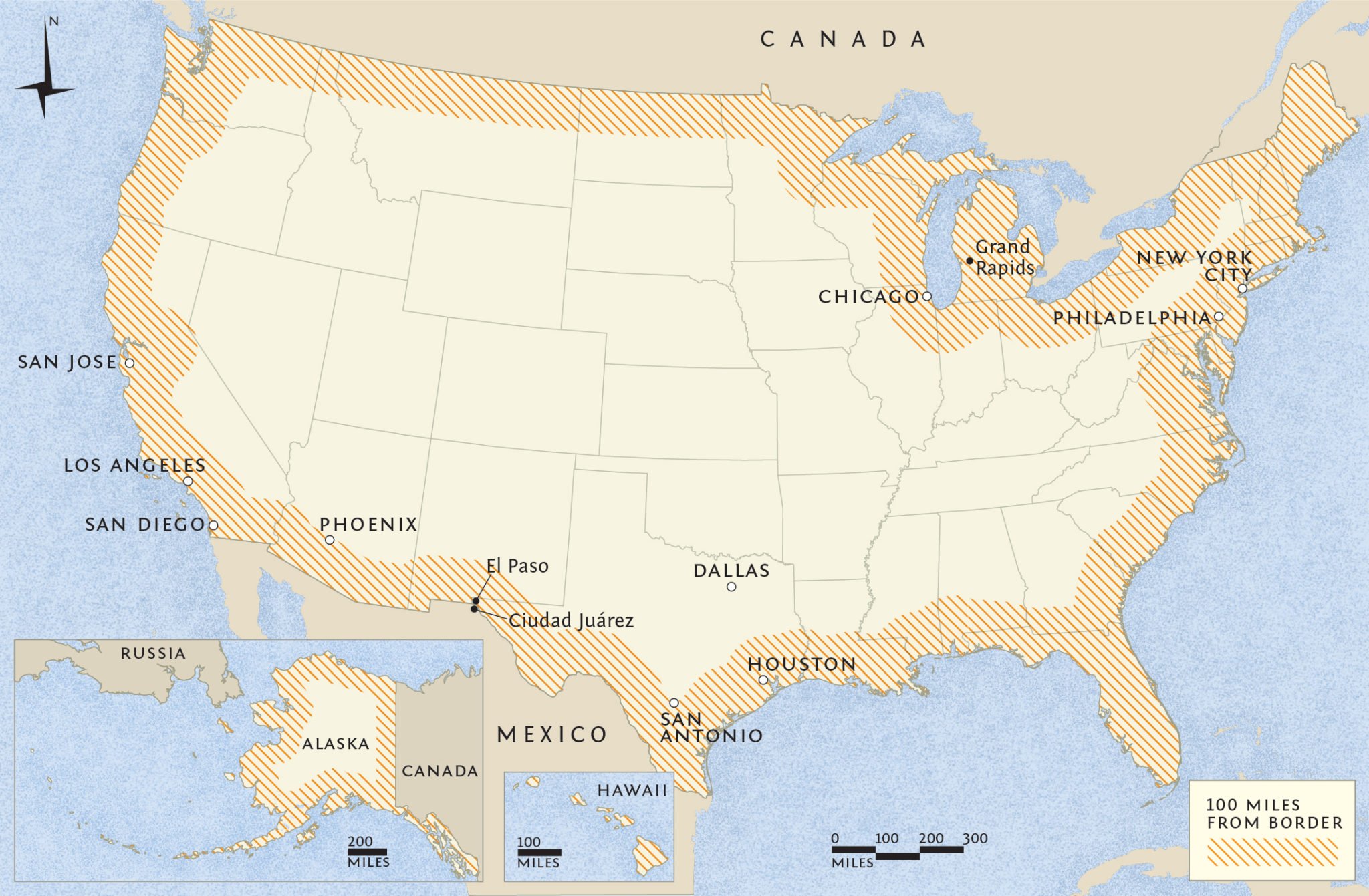
Within the border zone, Congress has granted CBP powers far beyond those of other law enforcement agencies. CBP, which largely consists of customs officers at ports of entry and Border Patrol agents who monitor the highways, has the authority to set up checkpoints almost anywhere within the 100-mile zone, and to search and detain people without a warrant as long as they feel they have “probable cause” to suspect that someone is in the country illegally or smuggling contraband. The Fourth Amendment of the Constitution protects citizens from “unreasonable searches and seizures,” but CBP operates with wide discretion, often using alerts from dogs as a reason to pull people aside for secondary inspection. Within 25 miles of any border, Border Patrol agents have even more expansive powers; they can enter private land without a warrant or the owner’s permission.
Being a U.S. citizen doesn’t protect you from harassment by CBP. Even if you never leave the United States, you can encounter Border Patrol at the 35 fixed checkpoints and dozens of temporary checkpoints they operate deep in the interior. The locations of these checkpoints are not made public, but the Cato Institute, a libertarian think tank, has developed a project to track them. In a recent report, Cato mapped checkpoints as far as 80 miles from the border.
Agents at these checkpoints interact with more than 27 million people annually, the vast majority of them U.S. citizens or legal residents, and conduct thousands of searches and seizures. Latinos in particular are routinely stopped and searched, in what has come to be known as the “Southwest stop-and-frisk.” Over the past 10 years, advocacy groups have seen complaints about harassment and abuse at these checkpoints rise, and they have raised concerns that CBP is slowly creeping farther into the interior of the country. “In court cases, we’ve seen roving patrols 200 miles beyond the border,” said Chris Rickerd, a policy counsel at the American Civil Liberties Union. “People are surprised to see CBP in Los Angeles or in Houston, but it’s a consequence of the agency not having any limits.”
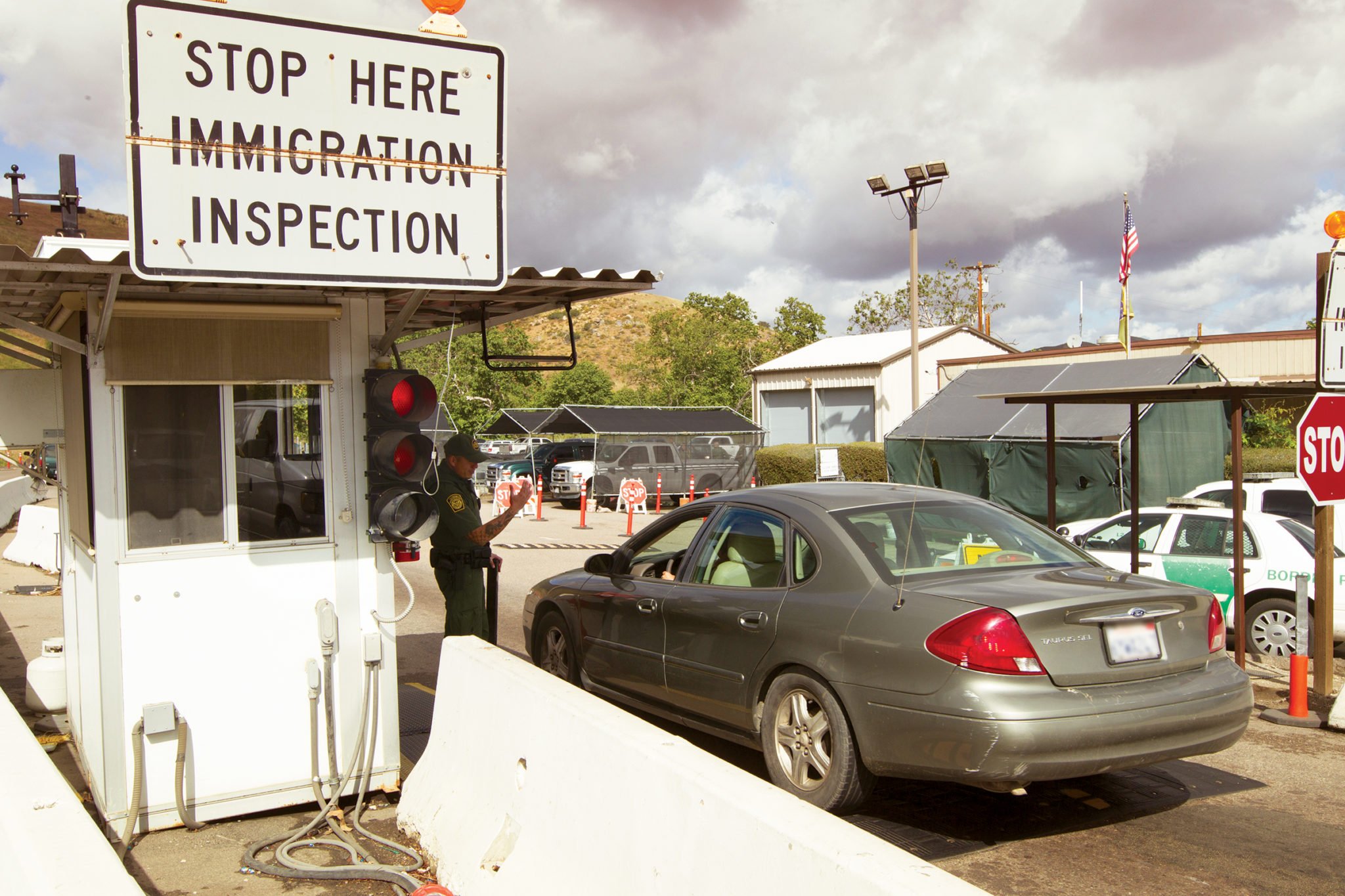
A CBP spokesperson, responding to written questions, insisted that Border Patrol does not have significant operations in major coastal cities north of Los Angeles or in the Mid-Atlantic region. “We are a border security agency, not an interior enforcement agency,” she wrote. But she also noted that CBP’s activities “are not geographically restricted by law.” Even beyond the border zone, the spokesperson asserted, Border Patrol agents have the authority to question individuals and make arrests.
Any political coalition seeking to reform immigration enforcement in the United States will not only have to rein in ICE; it will also have to halt CBP’s inward expansion and push its agents back to the borders. But Trump has emerged as the agency’s greatest defender. He has pledged to add 5,000 more Border Patrol agents to the force while signaling with his rhetoric about “bad hombres” and “animals” how they should treat those they stop.
–
In March, I met Sandoval at a small cafe in downtown Albuquerque, New Mexico. A slender woman in her 50s with pale-green eyes, Sandoval wore a tailored gray business suit and sat down apprehensively at a table in the corner. Before our interview, she had never spoken publicly about her experience with CBP.
Sandoval, whose name has been changed to protect her privacy, told me that after the officers forced her into the squad car, they drove her to University Medical Center, a public hospital in El Paso. The officers found an empty room and shackled her to the examination table. A nurse entered and asked her to swallow a laxative so they could observe her bowel movement. Then a group of doctors came in. Sandoval pleaded with them to let her go. “A nurse told me to calm down,” she said. “That this was something they did anytime Border Patrol brought people in.” One of the doctors conducted a vaginal and rectal search using a speculum and his hands. “The agents kept saying that they knew I had drugs,” Sandoval told me. Still not satisfied, the doctor ordered an X-ray and a full-body scan. Again they found nothing. “The only thing left was to cut me open,” Sandoval said.
After more than four hours, the officers called off the search. One of them asked Sandoval to sign some government forms. “She wanted me to give my consent,” Sandoval explained. “She said that if I signed the papers, they would take care of the hospital bill. They would be ‘good guys’ and pay, because it would be expensive.” Sandoval pushed the papers away.
Finally, the officers drove her back to the bridge. At the port of entry, a third officer tried again to persuade her to sign the consent forms. He let her smoke a cigarette. “He said I probably needed it after what I’d been through.” Sandoval still refused to sign. By the time she got back to her car, it was 8 o’clock at night — six hours after her encounter with CBP began.
They left the international bridge and drove north into Texas. Frightened, Sandoval asked the officers if they had a warrant for her arrest. “We don’t need a warrant,” one of them replied.
Sandoval tried to forget about what had happened to her. She figured it would be too costly to fight the government. But then the bills from the hospital started to arrive. For the cavity searches, the X-ray and the CT scan, the hospital was charging her $5,488. “I pay all my bills, but I was not going to pay these,” she told me. “So I started looking for a lawyer.”
Sandoval went to the ACLU to seek help with her medical bills, and they agreed to take her case. Edgar Saldivar, a staff attorney, explained to her that CBP appeared to have violated its own policies. CBP mandates that body cavity searches, which must be conducted by medical personnel, be ordered only “under the most exceptional circumstances,” and requires agents and officers to obtain a warrant from a judge, or a person’s consent. “It still baffles me why they kept going even though each exam came out negative,” Saldivar told me. “My client feels she was a victim of sexual assault.”
In December 2013, the ACLU filed a civil suit on Sandoval’s behalf against the customs officers and the hospital staff who had conducted the exams. From interviews the ACLU conducted with hospital staff, Saldivar got the sense that what had happened to Sandoval wasn’t out of the ordinary. “The reaction of the nurse was that these kinds of searches were normal,” he told me. “The doctors felt compelled to follow the orders of the law enforcement officers with guns.” CBP says that only 21 such searches were carried out nationwide in 2016, the most recent year for which complete data was provided, but Saldivar suspects that many others have experienced similar searches and are too ashamed or traumatized to come forward.
Even though CBP has a policy requiring that records be kept of all body cavity searches, the agency said it had nothing to send me when I filed a FOIA request for drug searches that did not result in an arrest, detention or deportation. That admission suggests that, in fact, the agency does not keep consistent records of searches like Sandoval’s, that turn up nothing. “There’s just no telling how many other illegal searches of American citizens go unreported,” Saldivar told me. “We have no way of holding CBP accountable.”
–
The law that gives CBP its extraordinary control over the lives of Americans, documented and undocumented, was in part a response to Cold War paranoia. In the first half of the 20th century, the United States employed fewer than 1,600 border agents, almost all of them stationed along the perimeter of the country. But in the mid-’40s, fear of a communist invasion began to grow in the nation’s capital. At the White House, President Truman ruminated on the Soviet threat in his personal diary: “The Reds, phonies and the Parlor Pinks seem to be banded together and are becoming a national danger,” he wrote. “I am afraid they are a sabotage front for Uncle Joe Stalin.” In the summer of 1946, Congress passed legislation giving federal border agents the “power without warrant to arrest any alien who in his presence or view is entering or attempting to enter the United States.” The authority would extend “within a reasonable distance from any external boundary of the United States.” Congress did not define at the time what it meant by a “reasonable distance.”
Border agents would soon use this new authority, but not against communists. During the Second World War, thousands of Mexican farm laborers had been brought to the United States under the Bracero Program, a binational agreement aimed at providing a much-needed supply of agricultural workers during the wartime boom. Many Mexicans not authorized to enter the United States also crossed the border looking for work. Less than a decade later, as a recession hobbled the U.S. economy, these unauthorized workers became convenient political scapegoats. In 1954, President Eisenhower appointed a retired general, J. M. Swing, to run what was then called the Immigration and Naturalization Service and look into the illegal immigration problem. In his first report to Congress, Swing compared the migration of undocumented Mexicans across the border to an “invasion” and warned of “mounting waves of people, always reaching further inland with each incoming wave.”
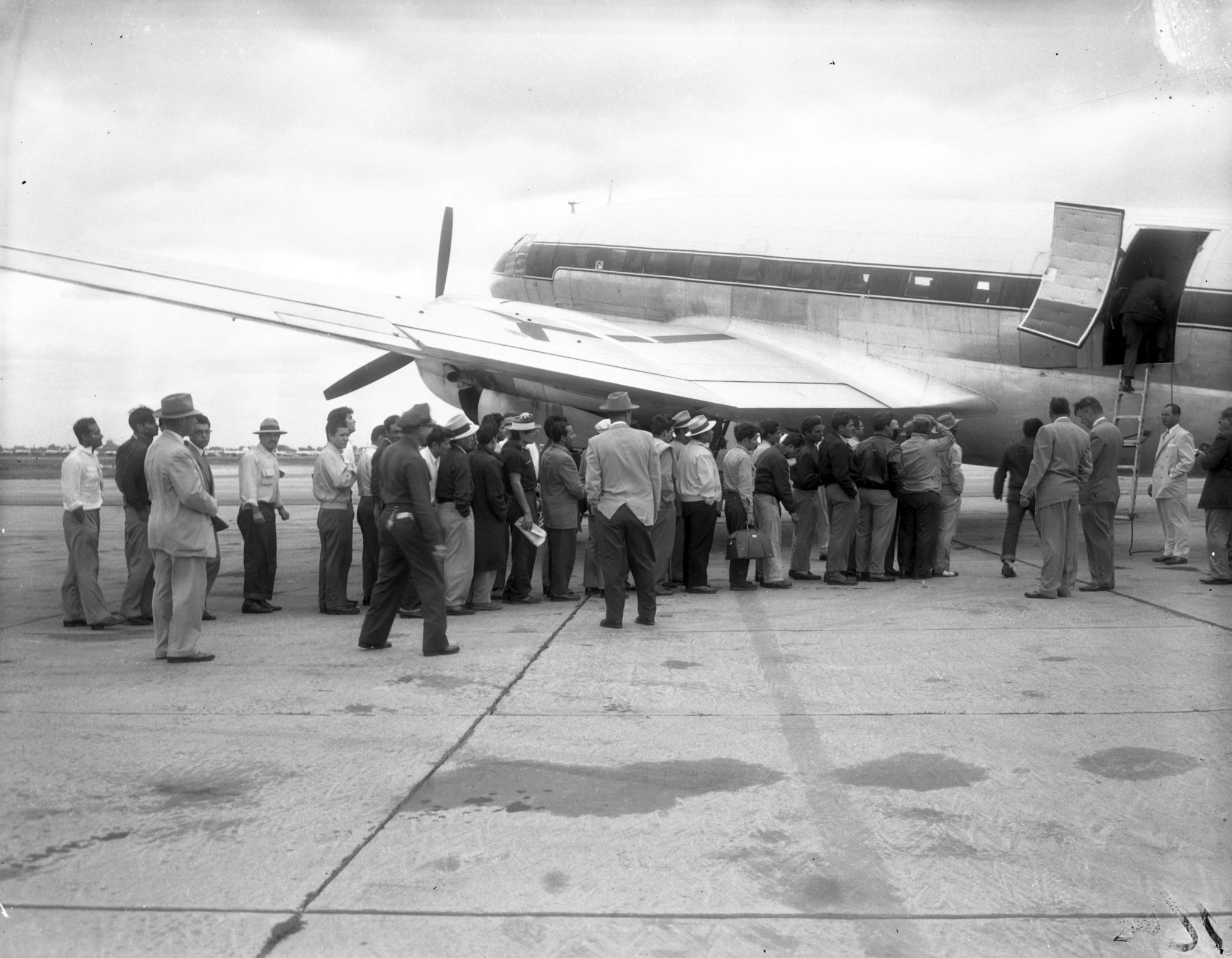
A year earlier, the Justice Department had adopted the regulation that defined a “reasonable distance” as up to 100 air miles from the border. Swing proposed that a permanent “special mobile force” of border agents be dispatched by land and air to carry out mass deportations of Mexicans. The mission grew out of Operation Wetback, during which Latino farming communities in California, Arizona and Texas were terrorized by raids, which then expanded north to cities such as Chicago and Spokane, Washington. (“Wetback” is an ethnic slur that originally referred to people who came to the United States by swimming or wading across the Rio Grande.) As historian Kelly Lytle Hernández describes in her book Migra!, federal border agents set up temporary detention facilities surrounded by barbed wire in public parks in Los Angeles. At least 300,000 people were deported during the operation, including a small number of U.S. citizens who were mistakenly swept up. Several people drowned while being transported in vessels that a congressional investigation would later compare to “eighteenth-century slave ships,” and others died from heat exposure after being abandoned in the Mexican desert.
Operation Wetback expanded the concept of immigration enforcement from something that took place on the border to something that could happen anywhere. But it was September 11 that most profoundly transformed the role of border agents. A year and a half after the attacks, the Bush administration merged the Customs Service and Border Patrol into one agency called U.S. Customs and Border Protection, and put it under the jurisdiction of the massive new Department of Homeland Security (DHS). As the country embarked on its global war on terror, the ranks of CBP surged to more than 44,000, making it the largest federal law enforcement agency in the nation. Today, CBP consists of more than 23,000 customs officers and nearly 20,000 Border Patrol agents.

During CBP’s rapid expansion, the agency ramped up its use of interior checkpoints, subjecting ever more Americans to warrantless searches, seizures and detentions near their schools, in their neighborhoods and on public roads. CBP’s own data suggests that its interior checkpoints do little to catch what it calls “unauthorized entrants” and instead ensnare U.S. citizens on minor drug charges. (Forty percent of its seizures were 1 ounce or less of marijuana taken from citizens.) From 2013 to 2016, interior checkpoints accounted for only 2 percent of CBP apprehensions of undocumented immigrants. In May, a circuit court judge in New Hampshire threw out charges against 16 people who were arrested for possessing small quantities of drugs at a checkpoint manned by local police and Border Patrol agents, about 90 miles south of the Canadian border. “While the stated purpose of the checkpoints in this matter was screening for immigration violations,” the judge wrote, “the primary purpose of the action was detection and seizure of drugs,” which he ruled unconstitutional.
The Trump administration has been aggressively promoting further cooperation between immigration agencies and police departments. Border Patrol agents often accompany officers during routine traffic stops and serve as backup or sometimes as interpreters, but their involvement in domestic policing has had lethal consequences. In 2011, a man in Washington state called 911 because his son, 30-year-old Alex Martinez, who had a history of mental illness, was smashing the windows of their home. Border Patrol accompanied local sheriff’s deputies to the residence, likely because the call was made in Spanish. When they arrived, Martinez stepped out of his house holding something in his hand. Law enforcement say it was a hammer; the family alleges it was a flashlight. A local deputy and a Border Patrol agent, who said they felt threatened, shot Martinez 13 times. Since 2010, watchdog groups have counted 77 CBP-related fatalities—at least one-fifth of them U.S. citizens.
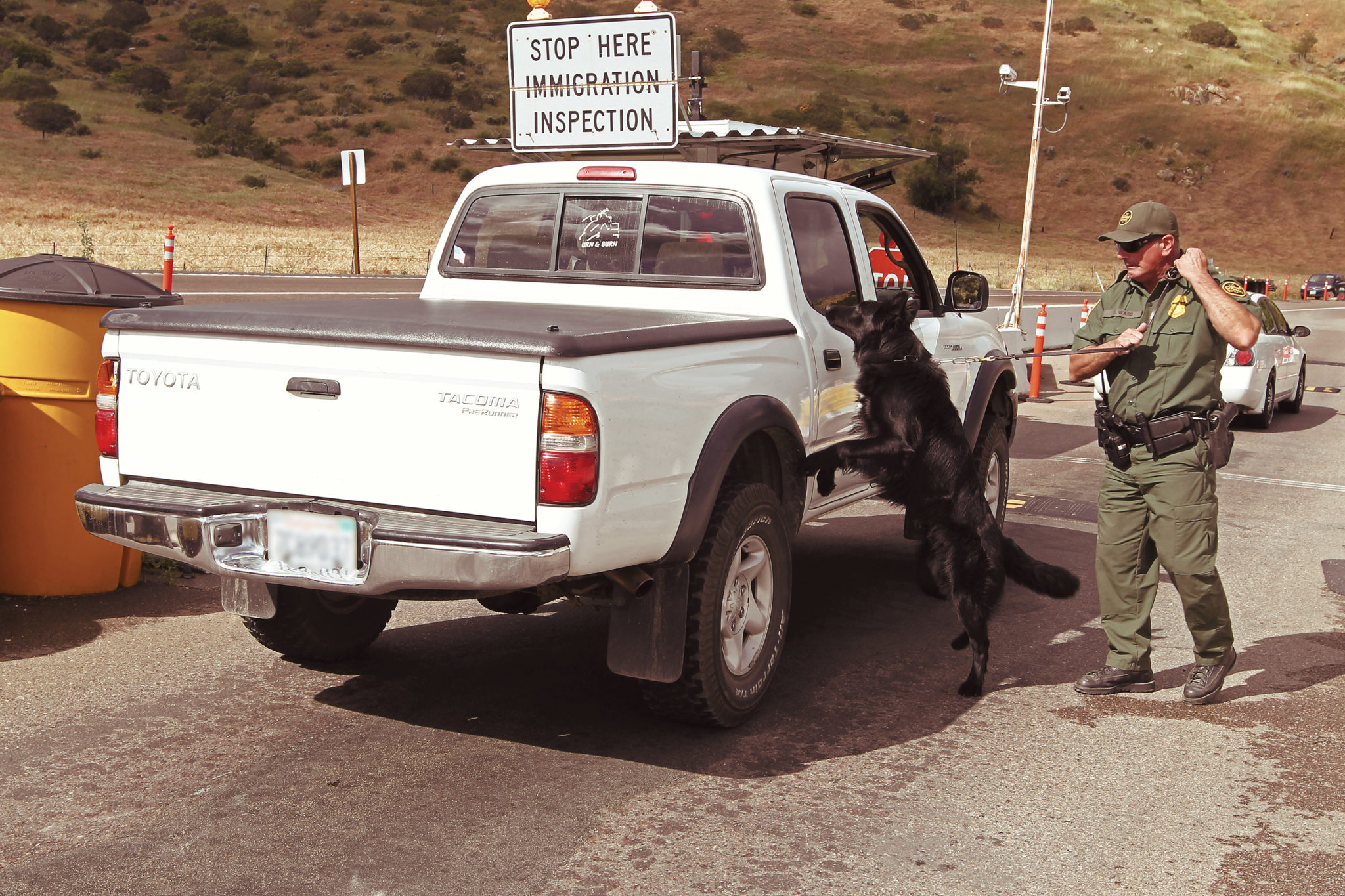
CBP operates with less oversight than your local police department despite having one of the largest federal budgets in Washington. The agency doesn’t reveal the names of agents or details of its internal proceedings in fatality or misconduct investigations. Until four years ago, CBP even kept its use-of-force policies secret; they were made public only after a congressional inquiry into a wrongful death resulted in an independent review. CBP hasn’t widely adopted dashboard or body cameras, although it began a six-month pilot project in May. In 2015, the Homeland Security Advisory Council, a panel of law enforcement experts formed by DHS, warned that CBP had no effective process to root out corruption and that its internal affairs office was woefully understaffed. “The true levels of corruption within CBP are not known,” the council warned. “Pockets of corruption could fester within CBP, potentially for years.”
–
Politicians have begun to take note of CBP’s culture of impunity. In 2008, Patrick Leahy, a senator from Vermont, was stopped at a temporary immigration checkpoint in New York — 125 miles from the border. Agents ordered Leahy to get out of his car and asked him to prove that he was a U.S. citizen. When Leahy asked under what authority the Border Patrol agent was acting, the agent pointed to his gun and said, reportedly, “That’s all the authority I need.”
In 2013, Leahy sponsored legislation to limit the northern border zone to 25 miles for vehicle stops and 10 miles for searches of private land without a warrant. His language was attached as an amendment to an immigration reform bill that passed in the Senate but failed to make it through the House. (Leahy reintroduced the measure in June. “The need for this legislation has never been clearer,” he said in a written statement, accusing the Trump administration of “aggressive yet wasteful use of immigration enforcement resources” and subjecting citizens to “needless and intrusive searches at Customs and Border Protection checkpoints far from the border.”)
Meanwhile, in the House, Beto O’Rourke, a third-term congressman from El Paso who is challenging Ted Cruz for his Senate seat, has proposed a bill that would attempt to restrain CBP. O’Rourke, a Democrat, is running a tough campaign in Texas, where Democrats haven’t won a statewide race in 24 years. He supports a legal path to citizenship for Dreamers, opposes Trump’s border wall and believes that reform is needed at both CBP and ICE. (Cruz has called O’Rourke’s views “radical,” and a spokesperson for his campaign said that O’Rourke would let “criminal aliens run wild around Texas.” Cruz supports Trump’s call for more Border Patrol agents and has been endorsed by their union, the National Border Patrol Council.)
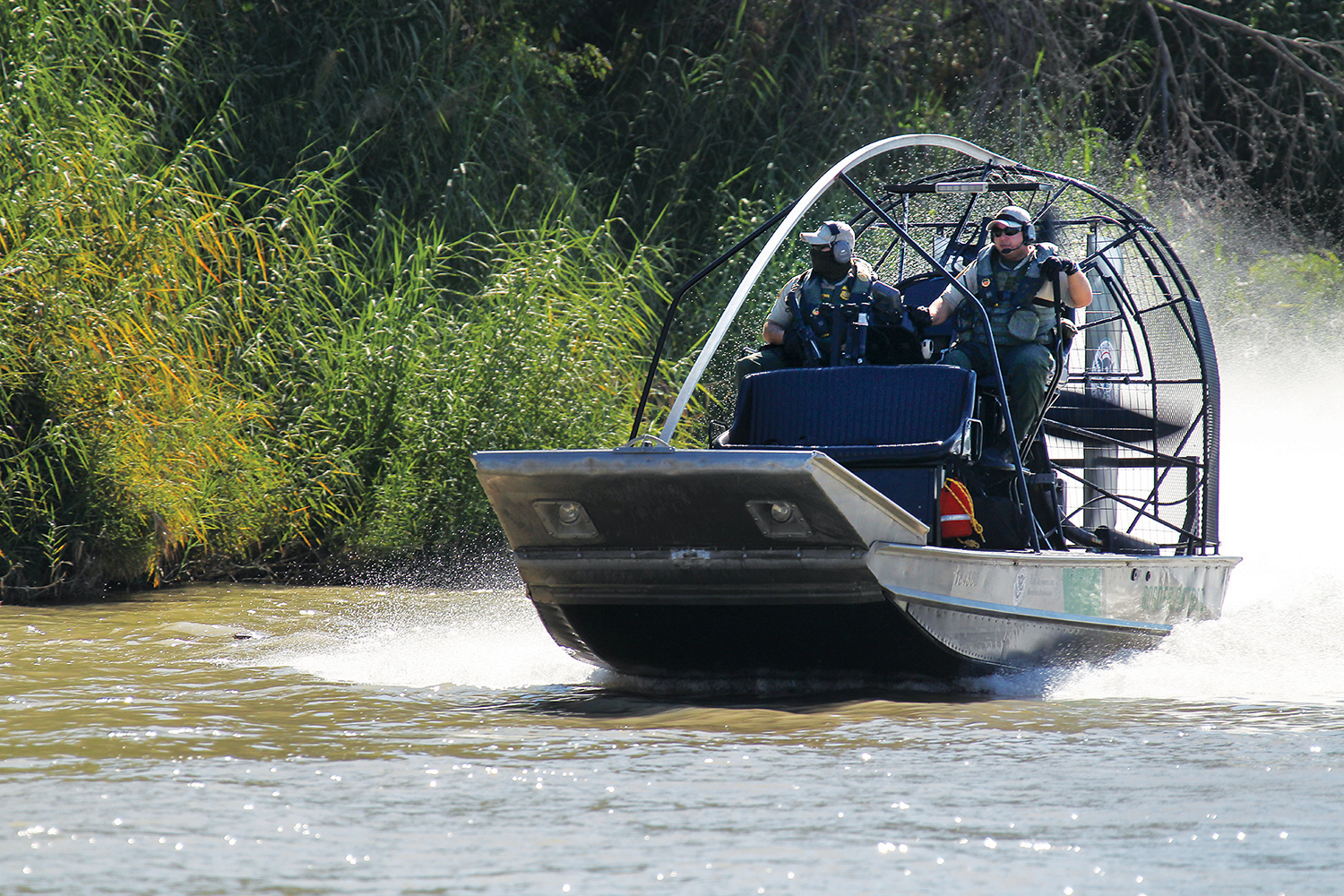
Like Leahy’s, O’Rourke’s opposition to CBP’s sweeping powers stems in part from his own encounter with border agents. In 2009, he and his 2-year-old son were detained at a checkpoint more than 70 miles from the border while agents pulled his truck apart. “They don’t have to explain why they’re holding you,” he said, “and you’re not given the right to an attorney.” O’Rourke told me that he and his son were held in a cell for close to 30 minutes before they were allowed to leave. “It was a strange feeling to be held against my will and to have my car searched,” he said. “I hadn’t committed any crime. I hadn’t even crossed the border.”
O’Rourke’s El Paso district includes University Medical Center, where Laura Sandoval was held. “At that point you are miles into the United States,” he said, “but she was not able to benefit from Miranda warnings or have an attorney.” O’Rourke’s legislation, called the Border Enforcement Accountability, Oversight, and Community Engagement Act, is co-sponsored by Steve Pearce, a Republican congressman from New Mexico — Sandoval is his constituent. It calls for a slew of changes at CBP, including the establishment of an independent ombudsman to investigate complaints, an oversight committee and subcommittees made up mostly of residents from the northern and southern borders to weigh in on how the agency is conducting itself in their communities. The legislation would also require the U.S. Government Accountability Office to issue a report on CBP’s interior enforcement practices — including at its checkpoints — and their practices’ impact on civil, constitutional and private-property rights.
Most importantly, CBP would have to reveal how far into the United States its current activities extend. The agency divides the United States into 20 sectors, and each sector chief has the authority to set up checkpoints anywhere up to the 100-mile limit as long as they sit along a route that ultimately leads to a border crossing. But the chiefs are not required to report where they deploy resources, so the exact boundaries of enforcement are impossible to know.
O’Rourke’s bill has languished in committee; he hopes that in November, voters in Texas will give him a new mandate to press the issue on the national stage. But he faces an uphill battle. Despite the evidence proving otherwise, CBP officials continue to argue that their interior enforcement efforts are crucial to America’s safety. In 2016, Mark Morgan, then the chief of Border Patrol, defended the use of interior checkpoints before the House Subcommittee on Border and Maritime Security. “The security of the border cannot be achieved by only enforcement activities located at the physical border,” he testified. “Checkpoints greatly enhance our ability to carry out the mission of securing the nation’s borders against terrorists and smugglers of weapons, contraband and unauthorized entrants.”
–
Since it has thus far proved impossible to reform CBP through political consensus, critics of the agency are increasingly turning to the courts. Over the decades, judges have repeatedly upheld the constitutionality of CBP’s warrantless searches and seizures. In a 1985 case, United States v. Montoya de Hernandez, the Supreme Court ruled that the detention, observed bowel movement and cavity search of a Colombian woman would be justified if “customs agents, considering all the facts surrounding the traveler and her trip, reasonably suspect that the traveler is smuggling contraband.” In an earlier case, United States v. Martinez-Fuerte, the justices ruled that CBP could stop anyone at its checkpoints across the country without cause. (These have become known as “suspicionless checkpoints.”)
But there are some limits. In a 1973 case, Almeida-Sanchez v. United States, the Court found that random stops and searches by agents on patrol — as opposed to those at checkpoints — were unconstitutional. Most recently, a federal judge in Massachusetts rejected the Trump administration’s bid to dismiss a lawsuit filed last year by 11 people who had their laptops and cell phones seized by officers at airports and border crossings around the country. That case will most likely be the next challenge to CBP’s authority to reach the Supreme Court.
The newest front in the legal battle over the border zone is located in Michigan. CBP considers the Great Lakes a maritime border, which means that all of Michigan lies within the 100-mile border zone, and anyone can be subjected to a warrantless search at any time. Miriam Aukerman, a senior staff attorney at the Michigan chapter of the ACLU, remembers being stunned when she discovered that CBP was operating throughout the state. “This exceptional power was given based on the idea that they patrol the border, not the whole state, which we think is unconstitutional,” she said.
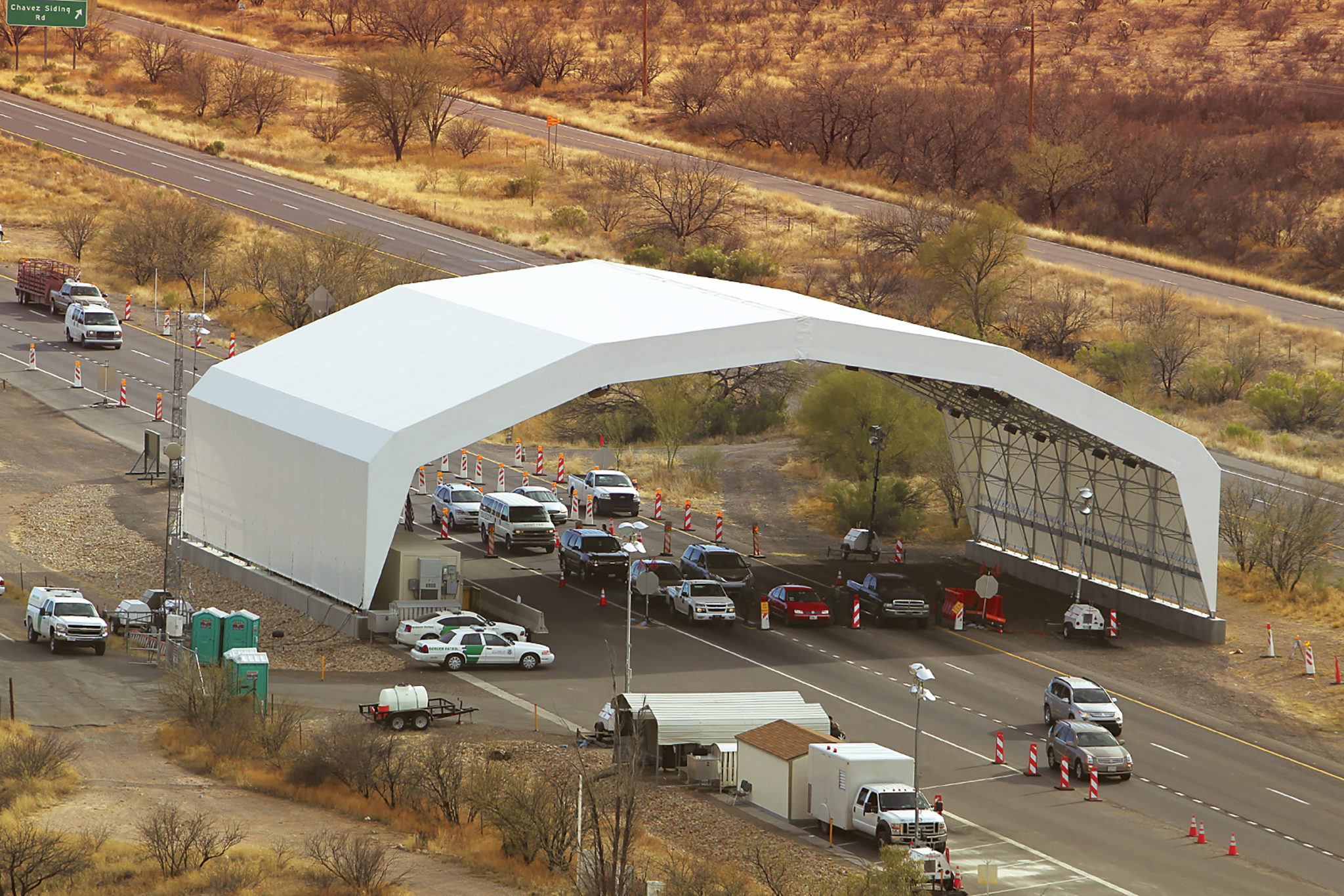
In 2015, Aukerman started inquiring with CBP to find out more about the scope of their practices in Michigan, but the agency refused to answer any of her questions. “Their position is, ‘We might be operating anywhere in Michigan, but we won’t tell you,’” she said. “The residents of Michigan have the right to know whether they’re going to be subjected to warrantless searches regardless of where they are in the state.”
Since then, Aukerman has sued CBP for a broad range of information relating to its authority within the 100-mile zone, from citizen complaints to incident reports and policy materials. “We want to know who they’re stopping and where, and we’re really interested in seeing how far from the border it’s happening,” Aukerman said. She expected it would take years before CBP handed over all the documents the ACLU had requested, but her resolve was buoyed by what they’d uncovered so far.
I visited Aukerman at her office in Grand Rapids. A preacher’s daughter with a wide, earnest expression, Aukerman clicked through a spreadsheet on her computer, showing me the hundreds of pages of CBP apprehension logs they had obtained. Already the data was revealing a troubling pattern, she said. Instead of using its vast resources to protect America’s boundaries from illegal activity and terrorists, as officials so often claim the agency is doing, Border Patrol is stopping American citizens and legal residents far from the border. In Michigan, Aukerman said, Border Patrol often worked in tandem with the police. Traffic stops for speeding or other infractions often lead to inquiries about citizenship status and a call to CBP. Of the people stopped by agents whose immigration status was recorded, nearly one-third were U.S. citizens. Of the people who said they were foreign citizens, only 5 percent had crossed the border in the past 30 days. At least 82 percent of the foreign citizens apprehended were Latino, she said. “There’s a real concern about how this turns into racial profiling.”
Agents at Border Patrol checkpoints interact with more than 27 million people annually, the vast majority of them U.S. citizens or legal residents.
Similar practices had already been uncovered in New York, where CBP has ramped up its interior enforcement over the past decade. In 2011, Families for Freedom, a nonprofit immigrant rights organization, obtained documents through FOIA litigation showing that agents at a single Border Patrol station in Rochester had wrongfully arrested nearly 300 U.S. citizens and legal immigrants during a four-year period. The only way that CBP measured its effectiveness, the group found, was through its apprehension rates. Agents in Buffalo were offered cash bonuses, prizes and extra vacation time if they boosted their arrest numbers, fostering a dragnet approach to enforcement that targeted people of color.
Among the documents she had obtained from CBP, Aukerman was disturbed to find a complexion code chart, which categorized skin color on a scale from “white to sallow to olive and black.” The document raises real questions, she said, about what CBP is doing with racial data. “It’s the fact that they’re thinking in those categories at all,” Aukerman said. “Because immigration is really about national origin and what your citizenship is. We’re a very diverse country, and whether or not you are here lawfully doesn’t depend on the color of your skin, but what’s on your paperwork.” (CBP confirmed that complexion is one of several “appearance annotations” that is entered into their system.)
Ultimately, what Aukerman is fighting for is the geographic data — CBP has refused to turn it over so far — so that she can map where Border Patrol is targeting people, along with their racial background and citizenship status. Aukerman told me that after she gets what she needs from the FOIA lawsuit, she and her colleagues will decide on the next legal step. She would like to see agents’ authority limited to enforcement at the border, as it was before the Second World War.
“It was a strange feeling to be held against my will and to have my car searched. I hadn’t committed any crime. I hadn’t even crossed the border.”
But the constant presence of CBP has already had a profound impact on Latino communities in Michigan. Elvira Hernández, Aukerman’s office manager, no longer leaves home without her U.S. passport. Hernández, who is in her 40s, was born in Mexico, but grew up in a small farming community outside Grand Rapids; she became a U.S. citizen in 1995. For many years before taking the job with the ACLU, she assisted seasonal farmworkers in Michigan with legal defense. Because of the heavy profiling by police and immigration enforcement in communities like Grand Rapids, Hernández said, she is afraid that if she were stopped by CBP or ICE she would be detained until she could prove her citizenship. “I’m brown with dark hair,” Hernández said. “They’re not going to take my word for it.”
–
Outside the cafe in Albuquerque, the sun had begun to dip behind the mountains. Sandoval and I had been talking for nearly two hours, and an employee had started stacking chairs around us, preparing to close up. Sandoval pulled her cup of coffee closer and frowned. “I don’t know why this is so difficult for me to get past,” she said. “I’ve become a different person, a reclusive person.” In 2014, University Medical Center agreed to a settlement of $1.1 million for its role in Sandoval’s cavity search. Two years later, CBP settled for $475,000 without admitting guilt. The agreement mandated that CBP personnel in El Paso receive training on searches and Fourth Amendment law to combat abuses. (A CBP spokesperson said that the agency “takes all its responsibilities with training seriously and complied with all provisions in the settlement.”)
Shortly after the agreement was reached, the ACLU sent out an advisory letter to more than 100 hospitals and medical facilities near the southern border, clarifying that medical personnel cannot be forced to conduct such searches. “While courts may afford somewhat more latitude on searches within border regions, all such searches are still bound by constitutional limits,” the letter read. A spokesperson for University Medical Center said the hospital no longer conducts searches or X-rays for CBP without informed consent or a warrant from a judge.
Sandoval said she was glad to hear that the hospital had changed its policy, but she still worried that CBP would subject others to similar treatment. She has not been back to Juárez. “It’s not because I’m afraid to go to Mexico,” she told me. “I’m afraid of coming back to my own country.”
This article was reported in partnership with Harper’s Magazine and the Investigative Fund at the Nation Institute, where Melissa del Bosque is a Lannan Reporting Fellow.
